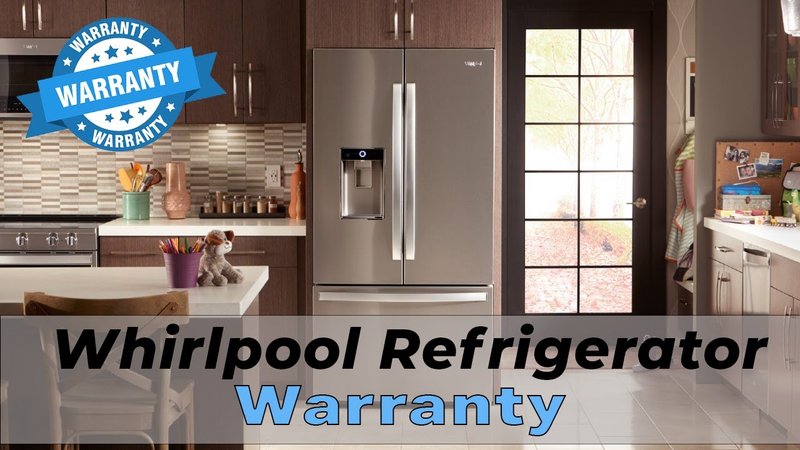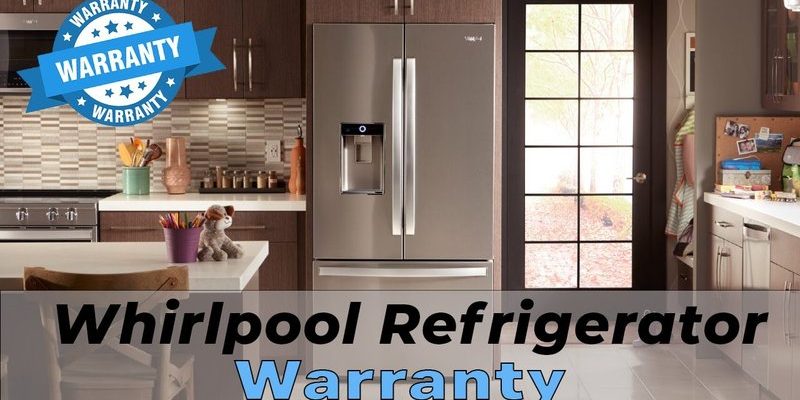
Imagine you’ve just moved into a new place, and your fridge is the heart of your kitchen—keeping your food fresh and your drinks cold. What if it suddenly stops working? Without a warranty, fixing or replacing parts can get pricey. Whirlpool, a brand that many trust, offers certain protection periods to cover repairs or replacements. But here’s the thing: the length and coverage of this warranty isn’t just one-size-fits-all. Let me explain how it works and what you should look for.
Understanding the Basics of Whirlpool Refrigerator Warranties
First off, a warranty on a Whirlpool refrigerator is like a contract between you and the company. It spells out how long Whirlpool promises to fix any defects in materials or workmanship without you having to pay. The standard warranty period for Whirlpool refrigerators typically lasts one year from the date of purchase. During this time, Whirlpool usually covers the cost of parts and labor to repair any manufacturing defects.
But why only one year? Well, honestly, most appliances come with this kind of limited coverage because it’s expected that under normal use, they won’t fail quickly. The warranty is there for surprise malfunctions, not wear and tear from everyday use. If your refrigerator develops a problem due to a manufacturing fault within that year, Whirlpool’s got you covered.
You might be thinking, “What if something goes wrong after that one year?” Good question. Whirlpool often offers extended warranties, or you can purchase additional coverage—sometimes called service plans—that help fill the gap beyond the standard warranty. It’s like adding extra insurance in case your fridge acts up later on.
What Does the Standard Whirlpool Refrigerator Warranty Actually Cover?
Here’s the thing—the warranty isn’t just about fixing your fridge if it stops cooling. It usually covers a range of issues tied to defects in materials or workmanship. For example, if a cooling compressor fails unexpectedly or the control board’s electronics glitch due to faulty parts, Whirlpool will repair or replace those covered components within the warranty period.
That said, the warranty usually does not cover damage caused by user errors, accidents, or normal wear and tear. For instance, if you accidentally spill juice into the freezer or damage the door seal yourself, that’s not on Whirlpool’s dime. Also, if the refrigerator needs repairs because of improper installation or if you’ve tried to fix it yourself (DIY troubleshooting gone wrong), the warranty might be voided.
Troubleshooting minor issues like syncing or resetting the digital controls can often be handled without waiting for a technician. But when it’s something major, the warranty ensures those repair costs aren’t coming out of your pocket—at least for that first year.
Extended and Special Warranties: What You Should Know
Let me explain: beyond the basic one-year warranty, Whirlpool sometimes offers extended warranties. These can stretch the protection up to 5 or 10 years, depending on the model and the part covered. For example, compressors—those essential engines of refrigeration—often get longer warranty coverage because they’re expensive and critical to keeping your fridge running.
These extended warranties might come included with some models or be available as an optional purchase. They’re a bit like buying peace of mind for the long haul, especially if you plan to keep your fridge for many years. However, always check the fine print to see exactly what parts and labor are covered.
Sometimes, retailers or third-party companies sell extended service plans that cover repairs beyond the manufacturer’s warranty. These plans might also include benefits like priority service or faster troubleshooting calls. Just weigh the cost versus the likelihood of needing repairs before deciding if this extra coverage makes sense for you.
Why Does Knowing Your Warranty Length Matter? Practical Reasons
Honestly, knowing your Whirlpool refrigerator’s warranty length sets realistic expectations. For example, if your fridge is just a few months old and suddenly stops cooling, don’t panic—your warranty likely covers that repair. You can call Whirlpool’s customer service or an authorized technician and avoid expensive out-of-pocket bills.
On the flip side, if your warranty has expired, you’ll be more prepared to shop around for affordable repairs or even consider replacing your unit if repair costs are too high. This helps you avoid the “sticker shock” of surprise expenses.
Also, the warranty status can affect resale value if you decide to sell your Whirlpool fridge. A fridge still under warranty often carries more appeal to buyers since it’s a safety net against repair costs.
How to Register and Keep Track of Your Whirlpool Refrigerator Warranty
Here’s the trick: sometimes warranties only kick in if you register your fridge with Whirlpool shortly after buying it. Registration is usually fast and easy—just enter your purchase details and model number on the company’s website. This helps Whirlpool keep track of your warranty start date.
Keep your purchase receipt and warranty paperwork somewhere safe, so you can refer to them when troubleshooting or if you need to schedule a repair. Many people forget this step, then scramble to prove when and where they bought their fridge if something goes wrong.
If you ever need to reset, pair, or troubleshoot any digital controls in your Whirlpool refrigerator, having handy warranty info can speed up the process with customer support—kind of like showing your ID card when asking for help.
Common Misconceptions About Whirlpool Refrigerator Warranties
You might have heard that “all warranties are the same” or that they cover everything indefinitely. That’s not true with Whirlpool refrigerators. The warranty is limited in time and scope. For example, if your fridge’s remote temperature control or sensor stops working after two years, it’s likely out of warranty, and you’d need to pay for repairs yourself.
Another misconception is that warranties cover damage from power surges, floods, or pests. Spoiler: those are generally excluded because they aren’t manufacturing defects but external factors.
Plus, some folks think they can use any repair guy, but Whirlpool warranties usually require authorized technicians for repairs. Using unauthorized service can void your warranty. So always check the warranty terms before calling a local repair shop.
Steps to Take If Your Whirlpool Refrigerator Needs Repair During Warranty
Let me break down what you should do if you think your fridge has a problem covered by the warranty:
- Locate your purchase receipt and warranty information. You’ll need these to prove your fridge is still under warranty.
- Try basic troubleshooting. Sometimes resetting or syncing the fridge controls solves minor issues without needing a repair call.
- Contact Whirlpool customer service. Explain the issue and provide your model and serial number.
- Schedule a service visit. Whirlpool will often send an authorized technician to inspect and repair your fridge at no cost if it’s a covered defect.
- Document the process. Take notes of who you spoke to and any repair work done—it’s helpful if further issues arise.
Following these steps can make the repair process smoother and ensure you don’t accidentally void your warranty by missing an official inspection.
The Bottom Line: What To Remember About Whirlpool Refrigerator Warranties
So, here’s the takeaway: the standard warranty for Whirlpool refrigerators is usually one year for parts and labor covering manufacturing defects. Some parts, like the compressor, might have longer coverage depending on the model. Extended warranties or service plans are options if you want extra protection.
Knowing the warranty length helps you handle repairs wisely, whether that means calling Whirlpool’s authorized repair team or realizing it’s time to budget for out-of-pocket fixes. Keep your registration and purchase documents safe, and don’t forget that warranties don’t cover everything—accidents, user damage, and external problems are usually your responsibility.
Owning a Whirlpool refrigerator comes with the comfort that if something goes wrong early on, you’re not alone in fixing it. That peace of mind? Well, it’s worth every bit of checking your warranty before the first problem shows up.
